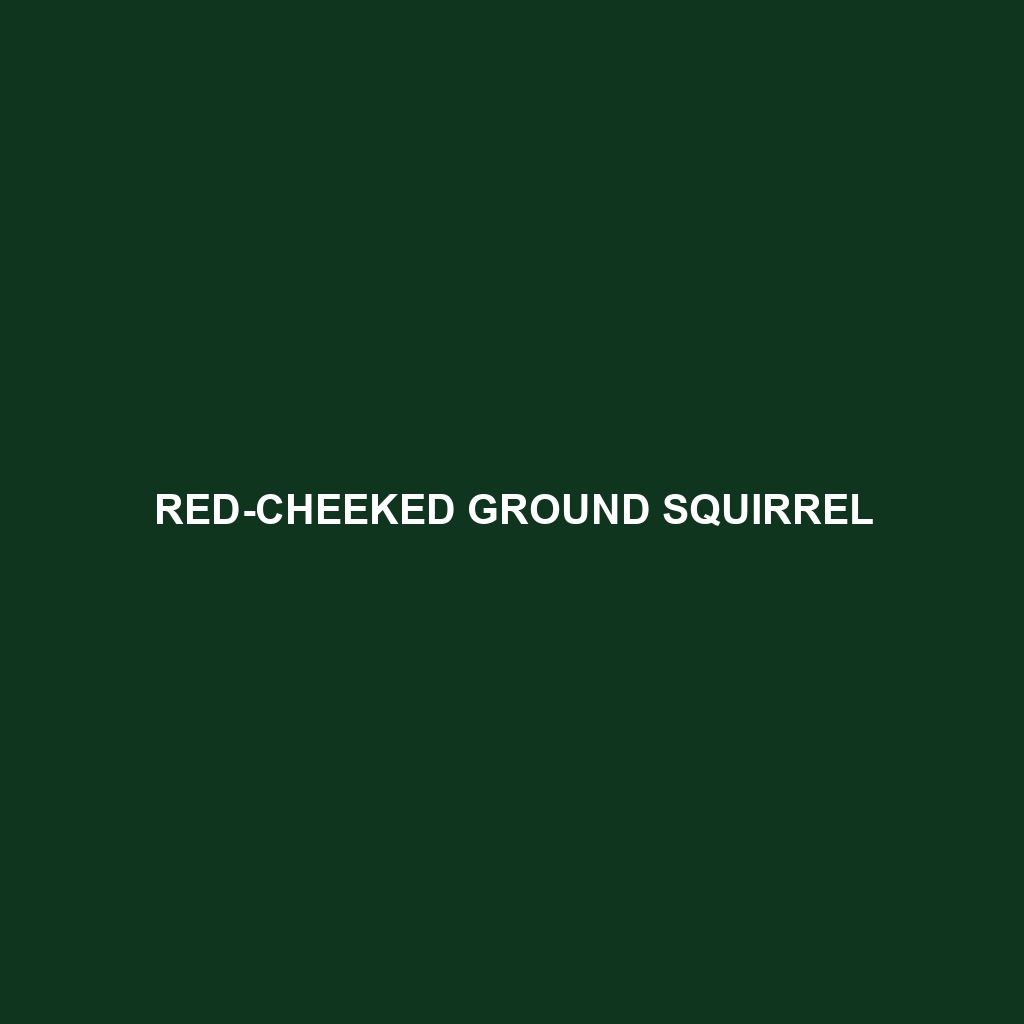Red-cheeked Ground Squirrel
Common Name: Red-cheeked Ground Squirrel
Scientific Name:
Habitat
The Red-cheeked Ground Squirrel is predominantly found in the arid and semi-arid regions of Central Asia, particularly in countries such as Kazakhstan, Uzbekistan, and western China. This species thrives in open grassy plains, steppes, and scrublands where it can burrow effectively and access a variety of food sources.
Physical Characteristics
Red-cheeked Ground Squirrels are medium-sized rodents, generally measuring between 20 to 30 centimeters in length. Their most distinctive feature is the reddish hue on their cheeks, which contrasts with their predominantly brownish-gray fur. They possess short limbs, a bushy tail, and rounded ears that enhance their hearing capabilities, making them adept at detecting predators.
Behavior
This species is known for its social behavior, often seen foraging and interacting in small groups. Red-cheeked Ground Squirrels are diurnal, predominantly active during the day. They are also territorial and engage in various vocalizations to communicate with one another, particularly in warning calls when predators approach.
Diet
The diet of the Red-cheeked Ground Squirrel consists mainly of herbaceous plants, seeds, nuts, and roots. They are opportunistic feeders and may also consume insects and other small invertebrates, especially during the breeding season to meet increased nutritional demands.
Reproduction
Reproductive activity in Red-cheeked Ground Squirrels typically occurs in the spring, with females giving birth to a litter of 4 to 6 offspring after a gestation period of around 30 days. The young squirrels are born blind and helpless, gradually becoming independent as they grow. Parental care is crucial for the survival of the young during their early weeks.
Conservation Status
The Red-cheeked Ground Squirrel is currently classified as vulnerable due to habitat loss and fragmentation resulting from agricultural expansion, urban development, and climate change. Conservation efforts are essential to monitor populations and preserve their natural habitats.
Interesting Facts
One fascinating fact about the Red-cheeked Ground Squirrel is its remarkable ability to store food underground in its burrows, which helps it survive harsh winters. Additionally, these squirrels can often be seen performing “sunbathing” behaviors to regulate their body temperature.
Role in Ecosystem
The Red-cheeked Ground Squirrel plays a significant role in its ecosystem as both a prey species for various predators, including hawks and foxes, and as a seed disperser. By digging burrows, they also aerate the soil, which contributes to nutrient cycling and promotes healthier plant growth in their habitat.
